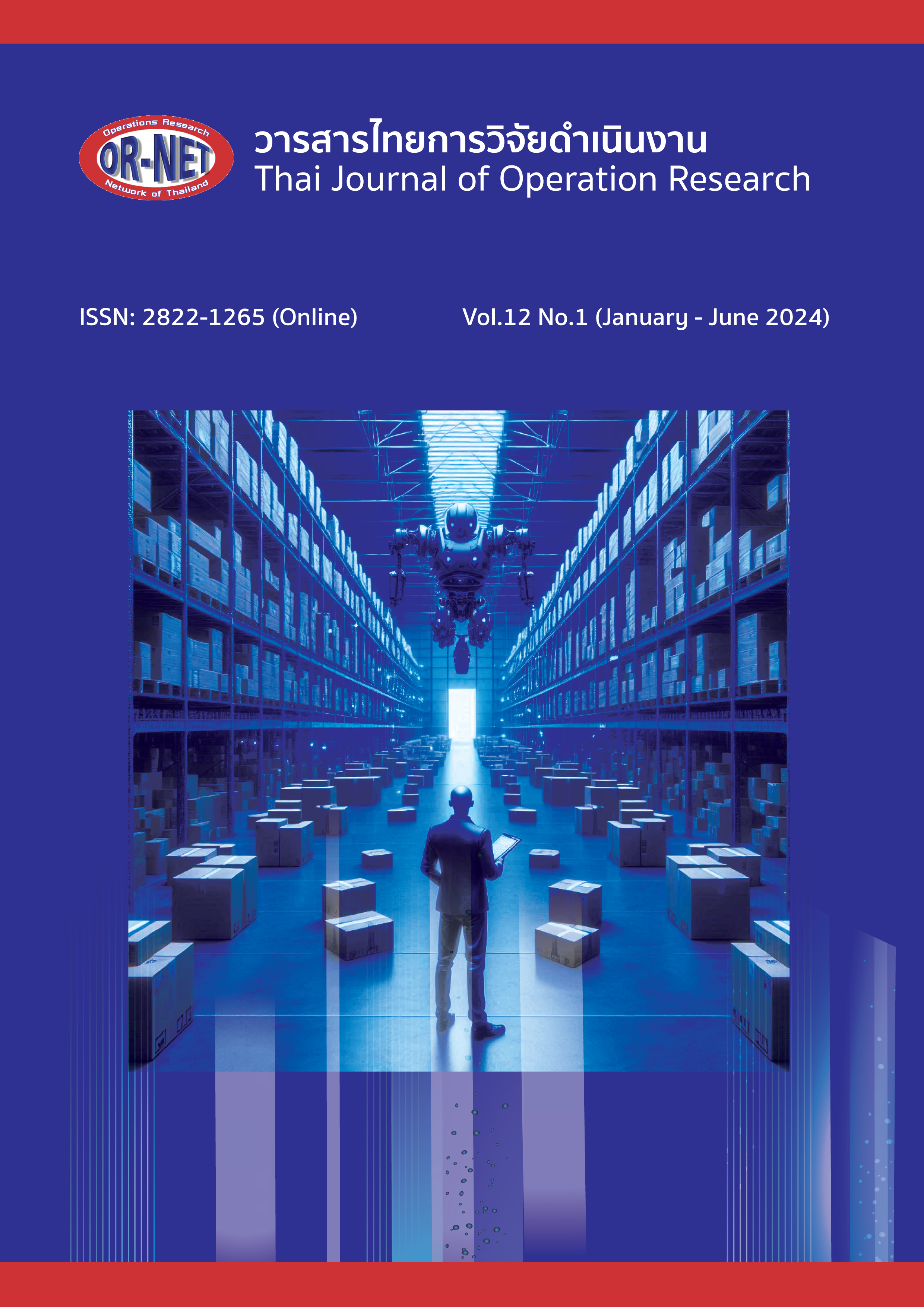Prediction of Influenza-Like Illness in Thailand
Keywords:
influenza forecasting, epidemic, ILI%, machine learning, feature selectionAbstract
This research aims to analyze the outbreak of influenza in Thailand by studying factors related to the epidemic and predicting the Influenza-like Illness percentage (ILI%). The ILI% data, aggregated monthly for each province in Thailand, is compared using five prediction methods: multiple linear regression, regression tree, Light Gradient Boosting Machine (LightGBM), Extreme Gradient Boosting (XGBoost), and random forest. The features used include vaccine-related factors, risk group disease factors, population factors, and weather factors. Additionally, feature selection methods such as Stepwise, Features Importance Ranking, SHAP Ranking, Boruta, BorutaSHAP, and Mutual Information Scores (MI Scores) with Boruta and BorutaSHAP. To evaluate the performance of the models, the researchers used the symmetric mean percentage error (SMAPE) as a metric. Random forest method, using MI Scores with BorutaSHAP, achieved the lowest SMAPE of 59.11% on the test dataset and identified significant features such as vaccination rate, number of houses, population aged 7-9 years, population aged 15-24 years, and number of patients with stroke. These forecasts can help prevent and mitigate the impact of outbreaks and inform vaccine distribution decisions, as well as community-level outbreak prevention strategies.
References
ณัฐพล จำปาสาร, รายงานประจำปี 2565: Influenza, กรุงเทพมหานคร: กรมควบคุมโรค สำนักงานควบคุมโรคที่ 9 กระทรวงสาธารณสุข, 2565.
H. N. Zhai, “The Analysis of Relationship Between Influenza and Atmospheric Ambient and the Establishment of Influenza-Like-Illness Rates Forecasting Model,” China University of Geosciences Wuhan, China, 2009.
D. Sanguanrungsirikul, H. Chiewanantavanich and M. Sangkasem, "A Comparative study to determine optimal models for forecasting the number of patients having epidemiological-surveillance diseases in Bangkok," KMUTT Research and Development Journal., vol. 38, no. 1, pp. 35-55, 2015.
M. J. Paul, M. Dredze and D. Broniatowski, “Twitter Improves Influenza Forecasting,” PLOS Currents., vol. 1, no. 6, 2014.
S. Kandula and J. Shaman, “Near-term forecasts of influenza-like illness,” Epidemics., vol. 27, pp. 41–51, 2019.
S. Maairkien, D. Areechokchai, S. Saita and T. Silawan, “Time series analysis and forecast of Influenza cases for different age groups in Phitsanulok Province, Northern Thailand,” Current Applied Science and Technology., vol. 20, no. 2, pp. 310–320, 2020.
E. L. Ray and N. G. Reich, “Prediction of infectious disease epidemics via weighted density ensembles,” PLOS Computational Biology., vol. 14, no. 2, pp. 1-23, 2018.
Y. Lu, S. Wang, J. Wang, G. Zhou, Q. Zhang, X. Zhou, B. Niu, Q. Chen and K. C. Chou, “An epidemic Avian Influenza prediction model based on Google Trends,” Letters in Organic Chemistry., vol. 16, no. 4, pp. 303-310, 2019.
X. Zhou, Y. Zhang, C. Shen, A. Liu, Y. Wang, Q. Yu, F. Guo, A. C. A. Clements, C. Smith, J. Edwards, B. Huang and R. J. S. Magalhães, “Knowledge, attitudes, and practices associated with Avian Influenza along the live chicken market chains in Eastern China: a cross-sectional survey in Shanghai, Anhui, and Jiangsu,” Transboundary and Emerging Diseases., vol. 66, no. 4, pp. 1529-1538, 2019.
H. Xue, Y. Bai, H. Hu and H. Liang, “Influenza activity surveillance based on multiple regression model and artificial neural network,” IEEE Access., vol. 6, pp. 563–575, 2018.
H. Xue, L. Zhang, H. Liang, L. Kuang, H. Han, X. Yang and L. Guo, “Influenza trend prediction method combining Baidu index and support vector regression based on an improved particle swarm optimization algorithm,” AIMS Mathematics., vol. 8, no. 11, pp. 25528-25549, 2023.
J. Zhang and K. Nawata, “Multi-step prediction for influenza outbreak by an adjusted long short-term memory,” Epidemiology and Infection., vol. 146, no. 7, pp. 809–816, 2018.
A. Kara, “Multi-step influenza outbreak forecasting using deep LSTM network and genetic algorithm,” Expert Systems with Applications., vol. 180, no. 3, 2021.
H. Stoppiglia, G. Dreyfus, R. Dubois and Y. Oussar, “Ranking a random feature for variable and feature selection,” Journal of Machine Learning Research., vol. 3, pp. 1399–1414, 2003.
S. M. Lundberg and S. I. Lee, “A unified approach to interpreting model predictions,” in 31st Conference on Neural Information Processing Systems, United States, 2017.
Downloads
Published
How to Cite
Issue
Section
License

This work is licensed under a Creative Commons Attribution-NonCommercial-NoDerivatives 4.0 International License.




